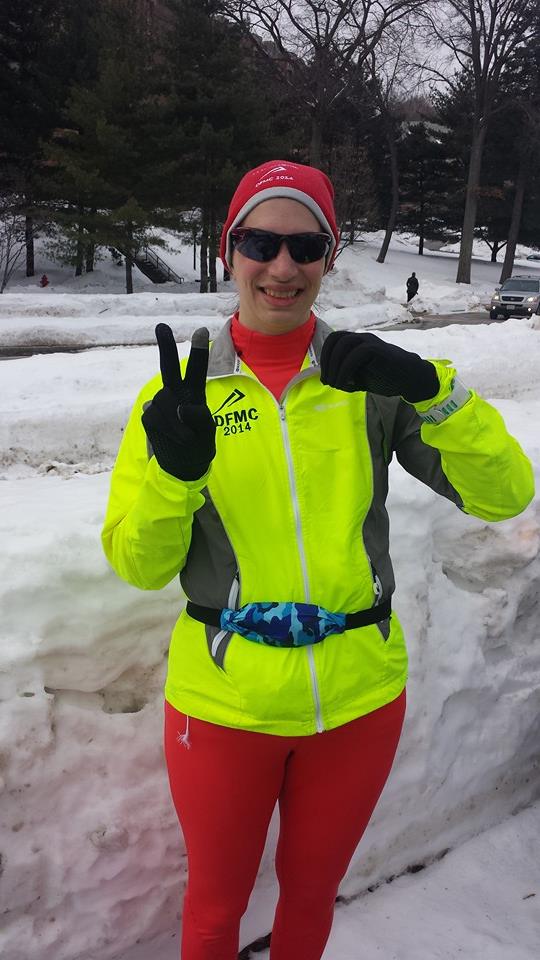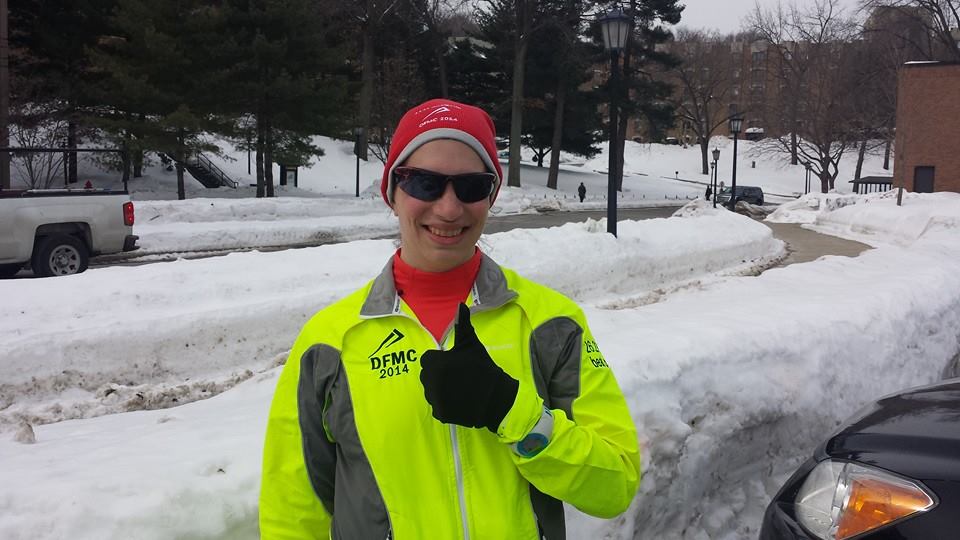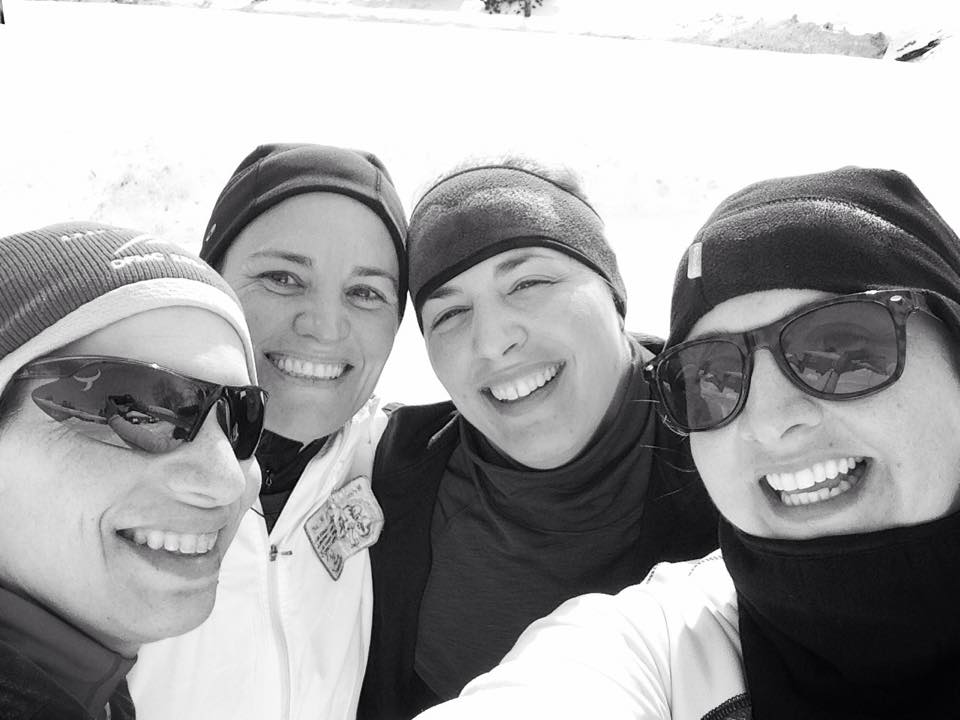Yesterday was my Workout for a Cause fundraiser at GymIt. I participated in the first class which was TRX for about an hour. Lynn my personal trainer was the coach at the two TRX classes yesterday and then a new personal trainer Katie coached the bootcamp. During the last two classes, I put in mileage on the arc trainer for 10.4 miles.
Fit Friday Special Edition: Personal Training Session and Workout for a Cause
Today I had my first personal training appointment since August. My personal trainer has been out because of knee surgery and has been sick. I have been working with her since 2010. We are a good team. We worked on my core since I need my upper body to become stronger and leaner for the marathon. We worked on different types of planks, sit ups, and torso turns. We decided to meet up at the beginning of every month to make sure that my form is correct and I stay injury free.
Before and after my personal training appointment I jumped on the arc trainer to get in some my miles. Tomorrow I will be back to the gym for my Workout for a Cause fundraiser and to get in more miles on the arc trainer – 10.4 miles.
Honor Cards
During Marathon weekend, the below honor cards will be on display on the walls in the Dana-Farber Marathon Challenge compund at the Marriot in Boston. I chose family and friends to honor who have been affected by cancer. These people have been on my mind during my training runs to help me persevere during the tough times. 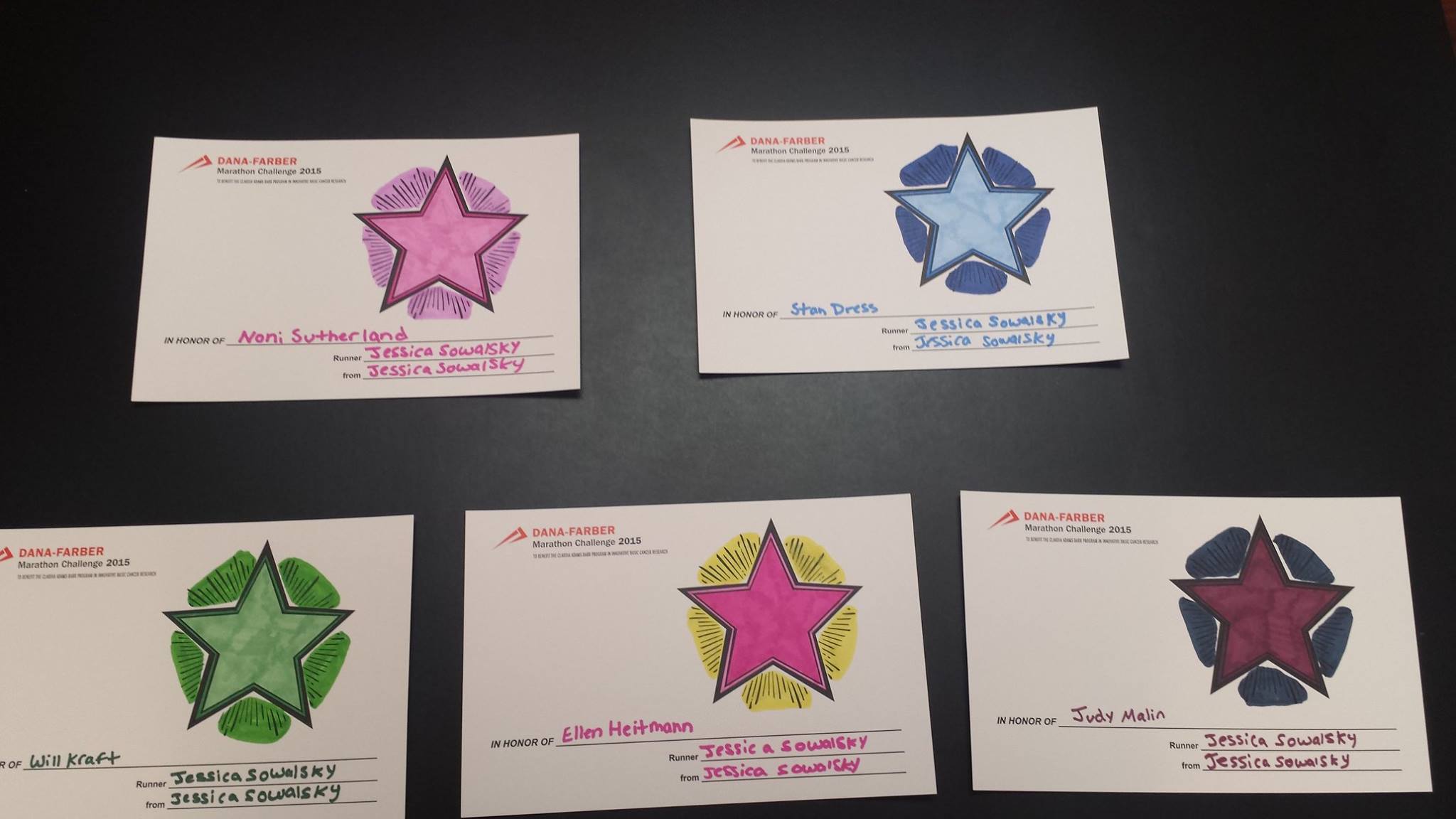
First Publication
Please read this publication about my story and my fundraising project and event.
My singlet is here!
Today is received my 2015 Boston Marathon in the mail. It has the same design as last year’s singlet but I love the bright colors. Just like my husband Adam says I will be a running traffic cone! The bright orange says it all!
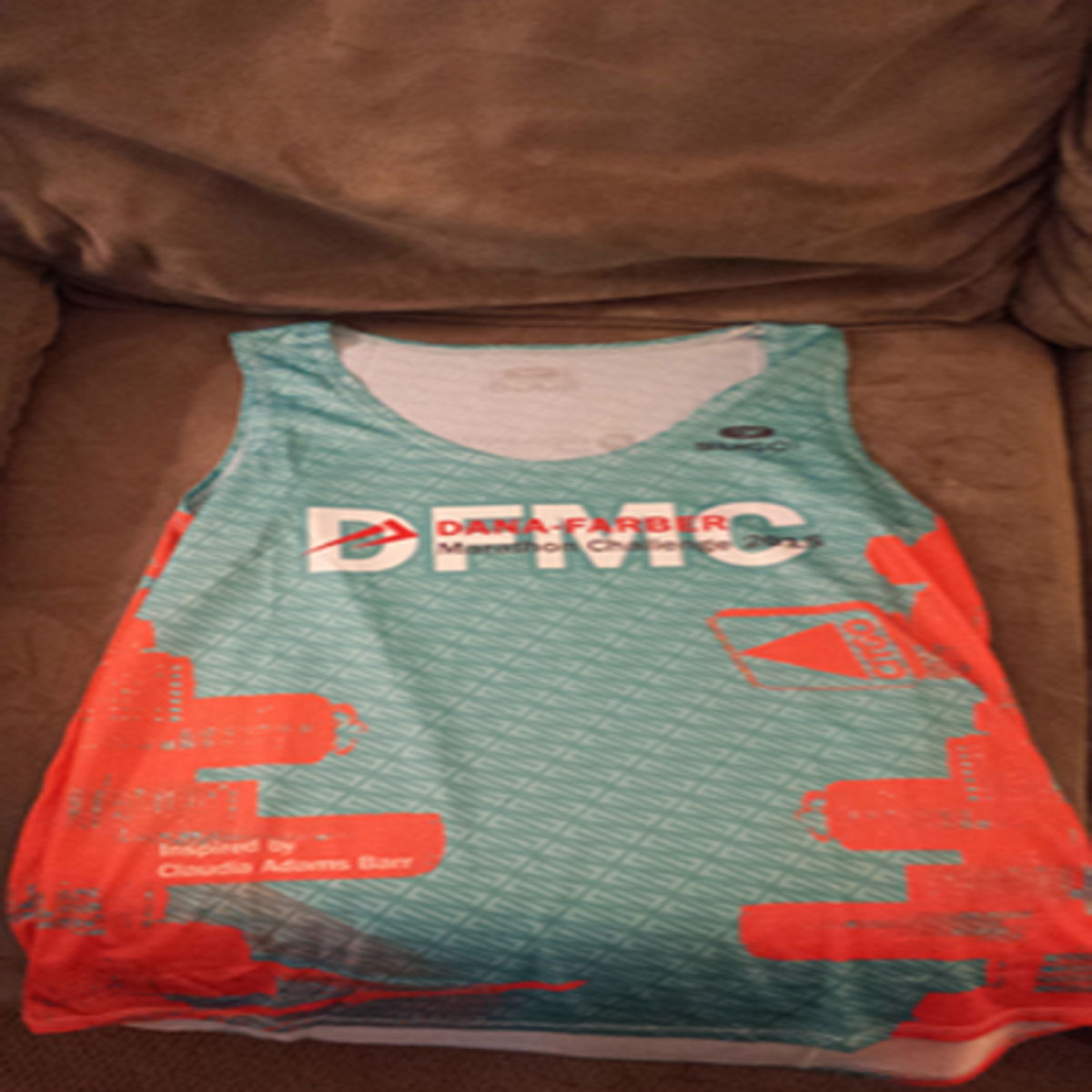
Heartbreak Hill Round Four
Today I ran 12.23 miles on Heartbreak Hill with my DFMC teammates for the fourth weekend in a row! We will be masters of this hill by the time the marathon comes around since we will be so use to running on it. It is the hardest part of the marathon course and it is when you least expect it.
Boston Marathon – Heartbreak Hill:
Heartbreak Hill is an ascent of only 0.4-mile (between the 20 and 21-mile marks, near Boston College).
It is the last of the Newton Hills which begin at the 16-mile mark and challenge contestants with late (if modest) climbs after the course’s general downhill trend to that point. Heartbreak Hill itself rises only 88 feet vertically (from an elevation of 148 feet to 236 feet.)
It was on this hill that, in 1936, defending champion John A. “Johnny” Kelley overtook Ellison ‘Tarzan’ Brown giving him a consolatory pat on the shoulder as he passed. This gesture renewed the competitive drive in Brown, who rallied, pulled ahead of Kelley, and went on to win—thereby, it was said, breaking Kelley’s heart … and earned the name, HEARTBREAK HILL!
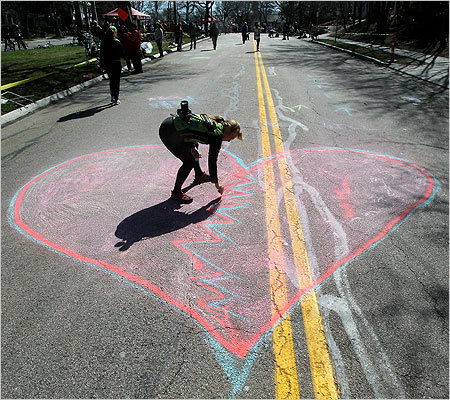
2015 Dana-Farber Marathon Challenge Singlet
Today was the day I was waiting for, for a long time…singlet reveal day! The singlet has the same Boston Skyline as last year but different colors and the colors are more vibrant than last year. I cannot wait to run for this team and show my Boston Strong pride again! I am already looking for a pair of shorts, a sports bra, and a t-shirt to wear underneath to match the singlet. I am pumped! 51 days to go! 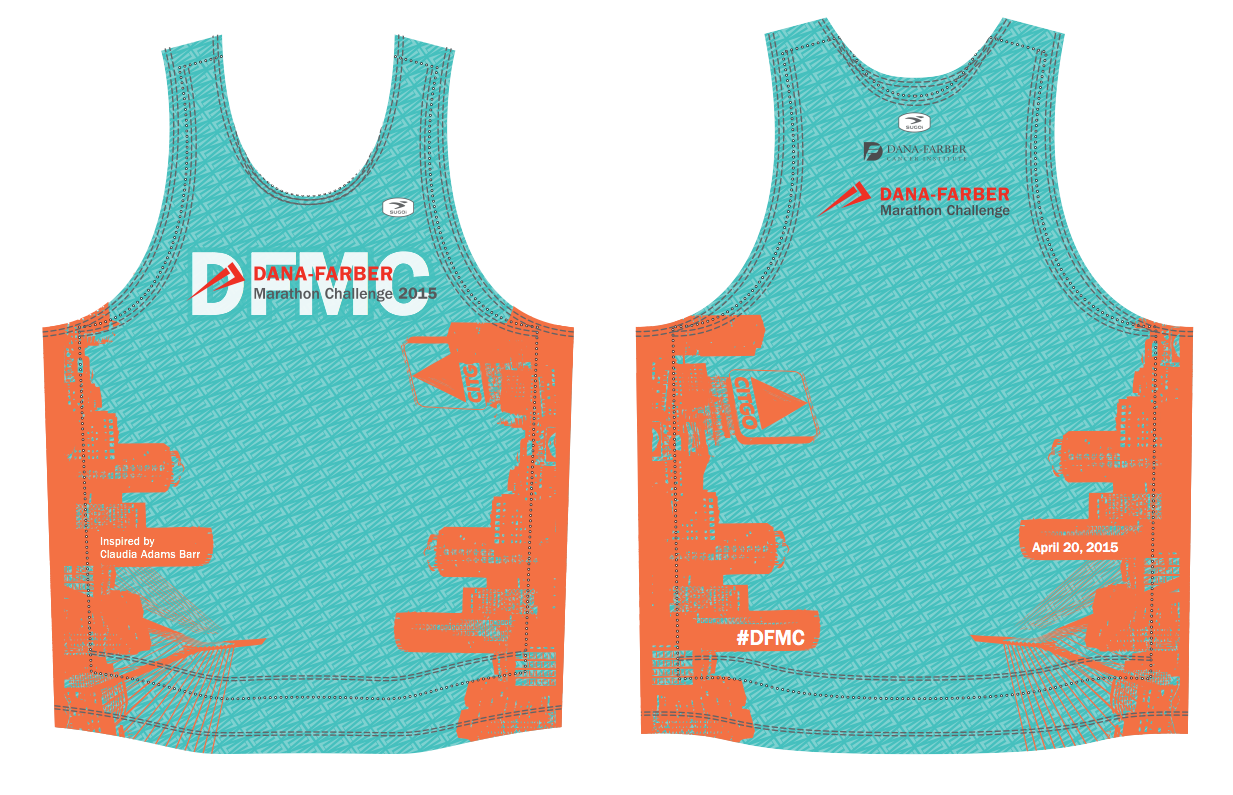
Below is the 2014 DFMC singlet.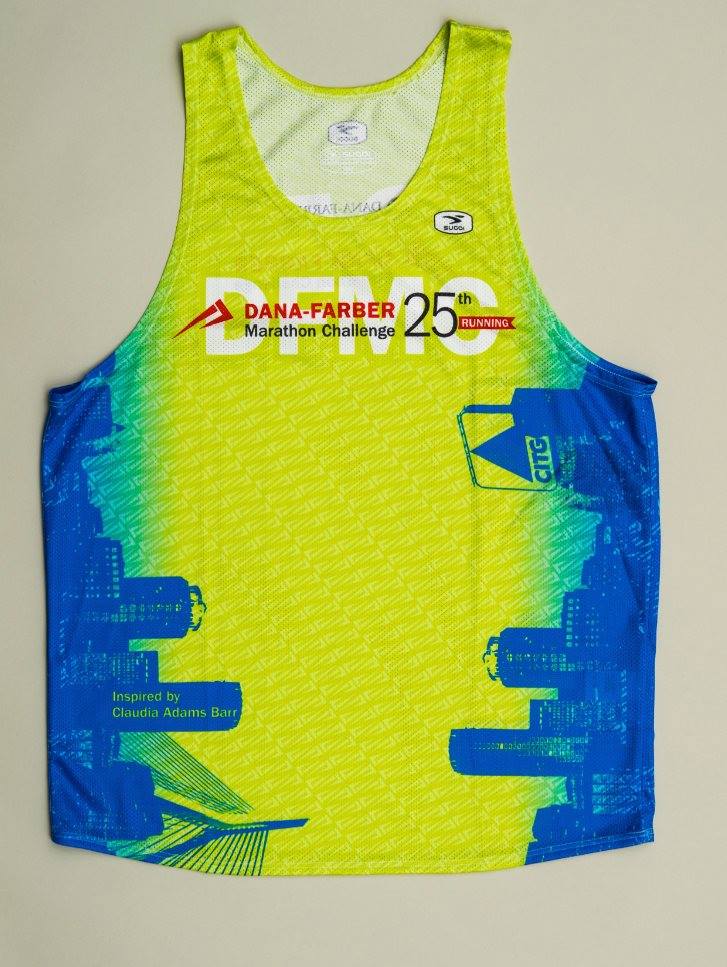
Thankful Thursday
Today I am thankful for my family, friends, and my health. Without these I do not know where I would be. I am also greatful for the opportunity to be on the DFMC team. I have made friends who I consider family and without this team I do not know where I would be. Today I went to the gym for an hour on the elliptical since I am still in Syracuse, NY. I am looking forward to seeing my teammates at the group run on Saturday. I put in 10.4 and 5.2 miles in NY on the elliptical at the gym so it leaves me with at least 11 miles to do on Saturday to meet the minimum of 26 miles for the week.
Today’s question relates to outdoor sun safety. What are some essential sun safety types for the winter time?
Winter sports enthusiasts are at increased risk for overexposure to the sun’s ultraviolet (UV) radiation. The combination of higher altitude and UV rays reflected by the snow puts skiers and snowboarders at an increased risk of sun damage, and ultimately skin cancer. More than 90 percent of all skin cancers are associated with sun exposure.
It’s easy to associate winter with frostbite and windburn, but most people are unaware that UV rays can be every bit as damaging on the slopes as on the beach. With the winter sports season ahead of us, it’s more important than ever to take proper precautions on the slopes.
Higher altitude means increased risk of sun-induced skin damage, since UV radiation exposure increases 4 to 5 percent with every 1,000 feet above sea level. At an altitude of 9,000 to 10,000 feet, UV radiation may be 35 to 45 percent more intense than at sea level. In addition, snow reflects up to 80 percent of the UV light from the sun, meaning that you are often hit by the same rays twice. This only increases the risk for damage.
Both snow and strong wind can wear away sunscreen and reduce its effectiveness, so you have to take extra precautions. To protect your skin from the bitter cold, heavy winds and winter sun, follow these important sun protection tips:
- Use a broad-spectrum sunscreen with an SPF (Sun Protection Factor) of 30 or higher whenever you spend extended time outdoors. Apply 30 minutes before hitting the slopes. Be aware that the sun’s reflection off the snow is strong even on cloudy days. (Up to 80 percent of the sun’s rays can penetrate clouds.)
- Apply sunscreen liberally and evenly to all exposed skin – most skiers and snowboarders do not use enough. You should apply at least a teaspoon to the face.
- Use a moisturizing sunscreen with ingredients like lanolin or glycerin. Winter conditions can be particularly harsh on the skin.
- Be sure to cover often-missed spots: the lips, ears, around the eyes, and on the neck, the underside of chin, scalp and hands.
- Reapply every two hours, and immediately after heavy sweating.
- Always wear a lip balm with an SPF 15 or higher – lips are very sensitive.
- Carry a travel-sized sunscreen and lip balm with you on the slopes. Reapply on the chairlift, especially after a long, snow-blown run.
- Cover your head – it will protect your scalp and help keep you warm.
- Wear items like ski masks, which will leave very little skin exposed to the wind and sun.
- Sunglasses or goggles that offer 99 percent or greater UV protection and have wraparound or large frames will protect your eyes, eyelids and the sensitive skin around your eyes, which are common sites for skin cancers and sun-induced aging. The sun’s glare can make you squint, so it’s important to wear sunglasses or goggles to clearly see the terrain. Plus, it will increase your enjoyment and may even improve your performance while skiing!
- If possible, ski early in the morning and later on in the day, before 10 AM and after 4 PM. This decreases the amount of time spent outdoors in the most intense sunlight and helps you avoid long lines.
- If you are on the slopes for most of the day, take a few breaks indoors to reapply sunscreen.
- Drink plenty of water to avoid dehydration.
Enjoy the winter season, but be sure to take care of your skin to avoid the damage the cold season can cause.
Weight Wednesday
Today I went to the gym, and did 2 hours on the elliptical instead of the arc trainer since I am in Syracuse, NY since my husband is presenting at Upstate Medical University. This weekend I will be running on Saturday on Heartbreak Hill again with the DFMC team since the sidewalks in Wellesley are icy and they are hard to run/walk on.
Today’s question relates to patients with cancer and the cold winter temperature. What are some challenges for people with cancer in the winter time?
- Dress in warm layers. Wrap a scarf around your nose and mouth before you head out into the cold to avoid any breathing problems.
- Wear a hat that covers your ears, and put on heavy gloves or mittens to protect your fingers.
- Wear shoes or boots with good treads.
- Make sure walkways are cleared of snow and ice.
- If you can’t avoid walking in the snow, walk like a penguin. Take flat-footed, short steps or shuffle for stability. Keep your arms at your sides (not in your pockets) to maintain your balance.
- Ask for—and accept—help with shoveling snow or running errands so you can avoid going out in inclement weather.
Longest Run this Marathon Season
Today I ran 20 miles on Heartbreak Hill. It was -14 degrees when I started running at 7:30 AM but by the time I finished which was around 1 PM it was 33 degrees. I used multiple layers of shirts and gloves plus heat warmers to get me through the run. I feel amazing and I feel like I am in the best shape of my life. I am so thankful for being on this team. Here are some photos from today’s run:

